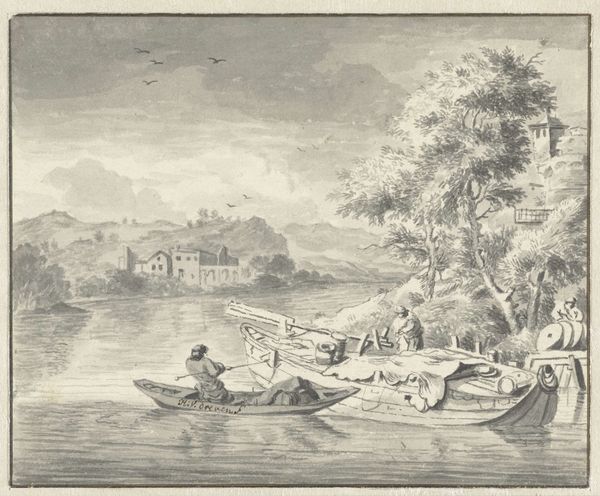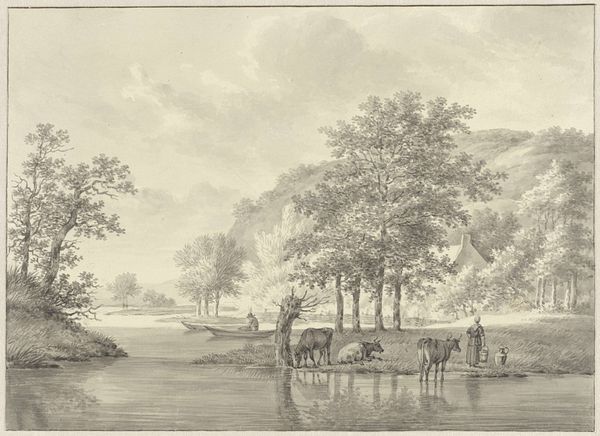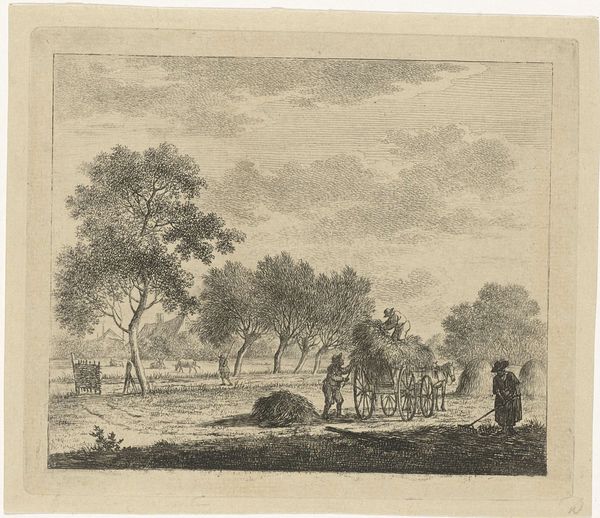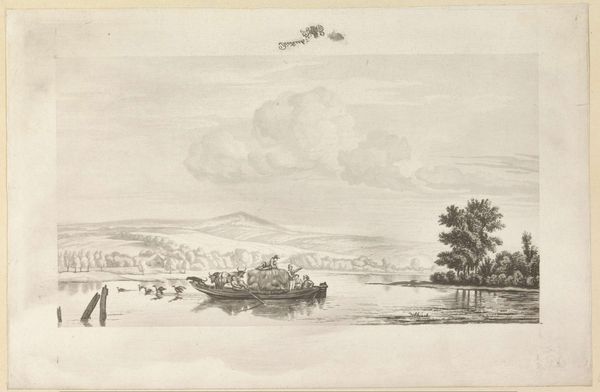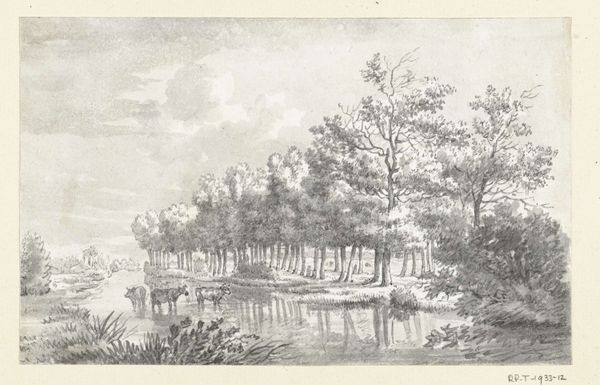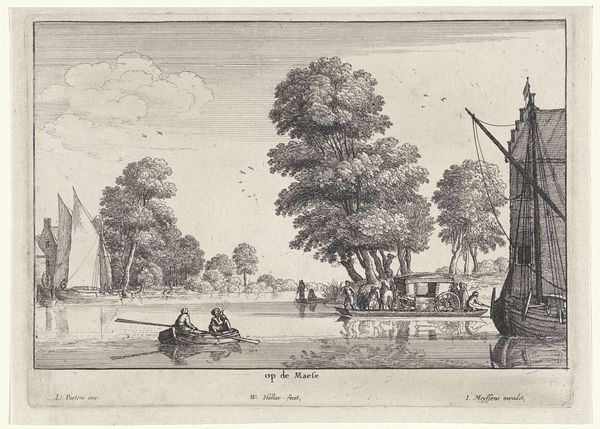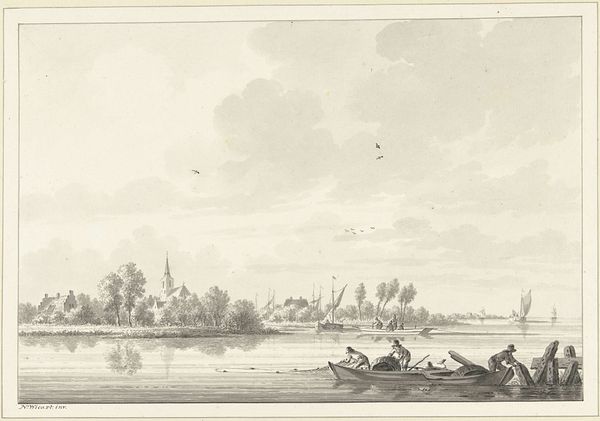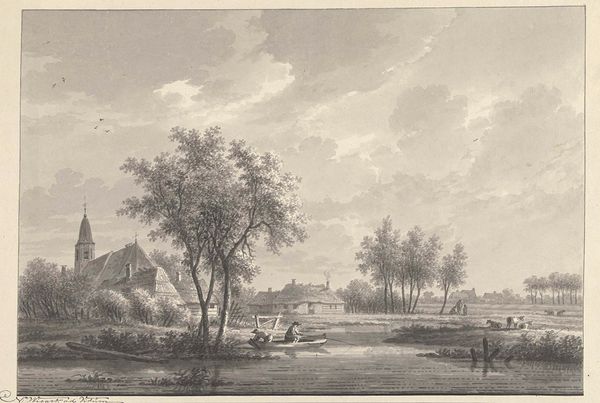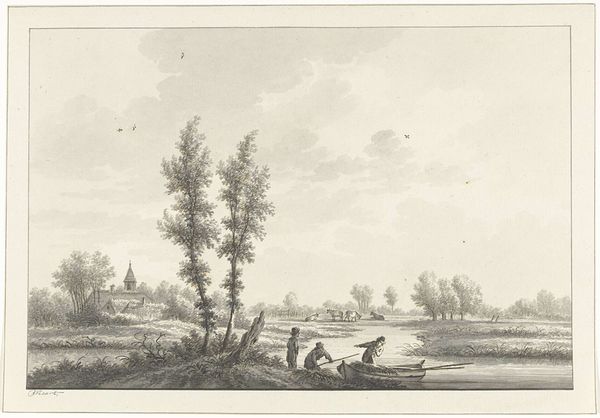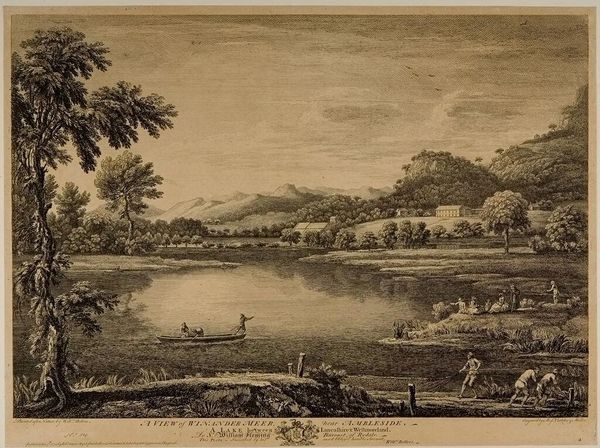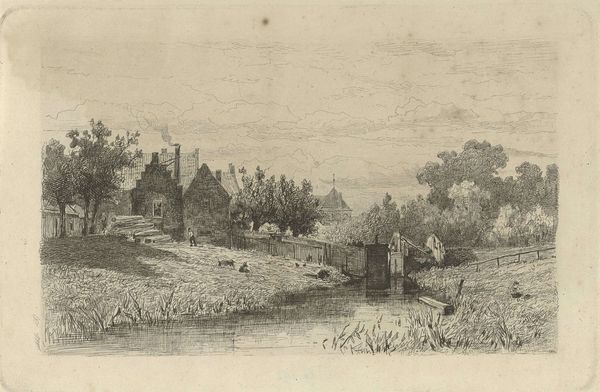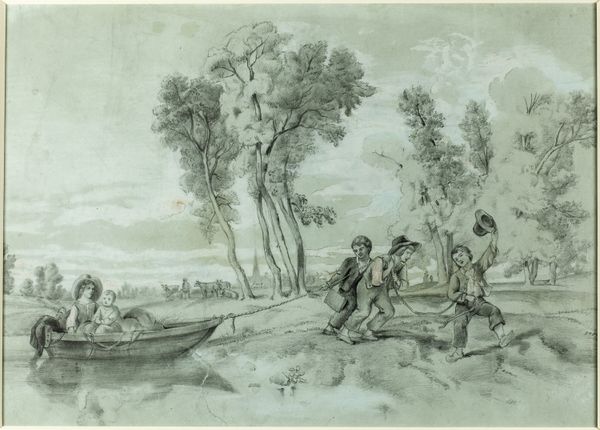
Dimensions: height 234 mm, width 303 mm
Copyright: Rijks Museum: Open Domain
Editor: We're looking at "Man met twee ossen en een hond" by Anthonij van der Haer, created sometime between 1745 and 1785. It’s an engraving, and there’s something so calm and pastoral about this scene. What do you make of this piece, considering its historical context? Curator: The Dutch Golden Age saw an explosion of genre painting and landscape art, elevating everyday scenes. Anthonij van der Haer situates this image in that popular vein, showing us a simple pastoral existence. But consider: who was this image for? Prints like this were widely distributed; what kind of socio-economic narratives were being perpetuated to the broader populace by depicting agricultural simplicity and human dominion over nature? Editor: That’s a good point, it's easy to romanticize it at face value. It seems almost staged, a little too picture-perfect. Is that just my modern sensibility kicking in? Curator: Perhaps. Think about the economic power structures and artistic patronage that allowed artists to flourish. How do images like these contribute to a larger narrative around land ownership and idealized country life? Is this accurate, or constructed? Also, note that the artist has signed the artwork; what could it mean for his status and ambition in promoting and circulating such engraving work in his time? Editor: So, beyond just a pretty picture, it reflects and reinforces certain societal values and class distinctions. It's also promoting the artist himself! I hadn't considered it that way initially. Curator: Exactly. These images weren't innocent; they played a part in shaping social and political views. This work becomes evidence, showcasing popular artistic style in relationship to the day's dominant ideologies. What did it mean to be human within the natural world at that time? Editor: It’s fascinating how much is embedded in such a seemingly simple artwork. It certainly changes my perspective on what the artist was trying to convey, or maybe reinforce. Curator: Precisely! The public role of art can often subtly promote socio-political norms that we ought to examine.
Comments
No comments
Be the first to comment and join the conversation on the ultimate creative platform.
